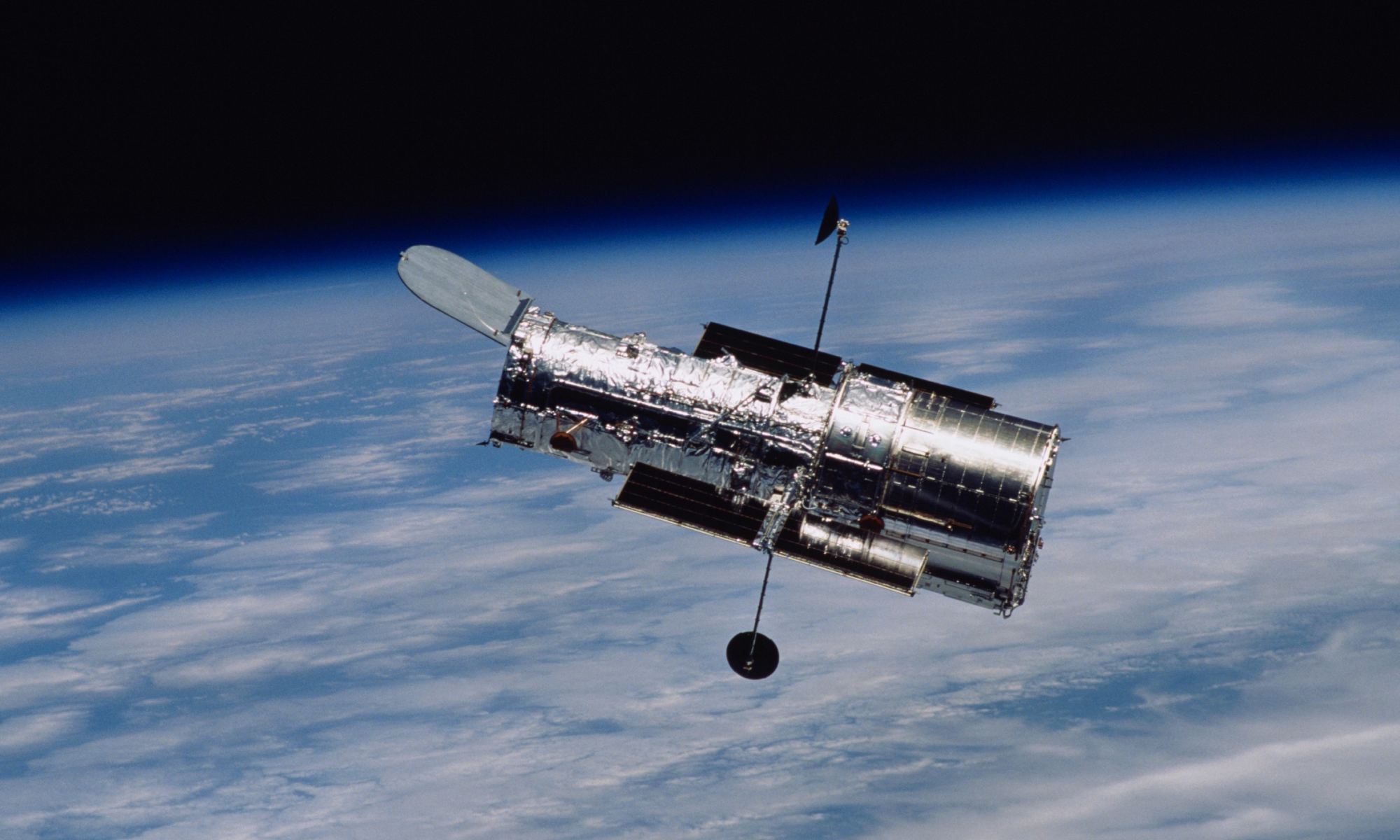The rich flow of scientific data—and stunning images—that comes from the Hubble Space Telescope is being interrupted by gyro problems. One of the telescope’s three remaining gyros gave faulty readings, and the Hubble automatically entered safe mode. In safe mode, science operations are suspended.
Without gyros, the Hubble can’t orient itself properly. Gyros measure the telescope’s turn rate and help the telescope know where it’s pointed. They’re part of the system that keeps the space telescope pointed in the right direction. There’s no indication of any problems with Hubble’s instruments, like its Wide-Field Camera 3 or its Advanced Camera for Surveys.
This all began on November 19th when Hubble went into safe mode. Engineers recovered the telescope, and regular science operations resumed the following day. However, the unstable gyro caused problems again, and the space telescope suspended science operations again on the 21st. It was recovered again, then went back into safe mode on November 23rd. That’s where things stand now.
The Hubble was launched with six original gyros, but they failed fairly rapidly. During its last shuttle servicing mission in 2009, the Hubble received six new gyros. Three of them were the older type that failed fairly quickly, and three were new ones. The three older ones from 2009 have failed, and Hubble has three remaining gyros, and all of them have a more modern design. It can operate with a single functioning gyro, though it’s less efficient.

Each gyro is a small cylinder filled with fluid. Inside the fluid, an internal float spins thousands of times per second. The original six gyros and three of the 2009 replacements contained bromine in the fluid. The bromine ate away at the gyros, causing their eventual demise.

This isn’t the first time failing gyros have caused a shutdown in Hubble’s science operations. The preceding incident happened in 2018. At that time, Ken Sembach was the Director of the Space Telescope Science Institute (STScI.) In an interview, he expressed some frustration, telling Business Insider, “We’ve had some issues with this gyro in the past, and we’ve got some possible leads on the current problem. But the thing that’s been clear on Hubble is that these gyros all have a mind of their own. I don’t think anybody really knows what’s going on with it right now.”
The gyros are just part of the system that keeps Hubble pointed where astronomers want it pointed. The system also includes reaction wheels and fine guidance sensors.

Hubble doesn’t have any type of thrusters, so it can’t propel itself. But it can change its attitude or orientation using its reaction wheels. That’s how it acquires different targets. But it needs gyros and fine guidance sensors, too, along with other components. They all work together, and without gyros, the system can’t function.
There won’t be any more servicing missions to Hubble. So as gyros and other equipment keep failing, the telescope will eventually become just more space junk. But NASA expects the gyros to last into the 2030s.
Hubble personnel are running tests on the telescope’s systems in hopes of coming up with a solution. If they can’t get the malfunctioning one going again, then they’ll change tactics. They’ll reduce operations to a single gyro, which will affect science operations. Eventually, that one will fail, and then they’ll have one last remaining gyro they can use.
It’ll be sad when the last gyro fails. The Hubble has been in operation for 33 years, and generations of people have grown up looking at its images. It wasn’t our first space telescope, but it’s been the best one for decades.

The Hubble Space Telescope’s place in history is assured, no matter how much longer it lasts. But NASA has proven that they can keep Hubble going even without laying hands on it.
Let’s hope they can keep it going and get back to normal science operations soon. Discoveries await, so does eye candy.


I wonder how much sky-coverage you get with 1 gyro? I know only half of the sky is available with 2 gyros; could it be a quarter of the sky? Still, a quarter is still way better than none at all…